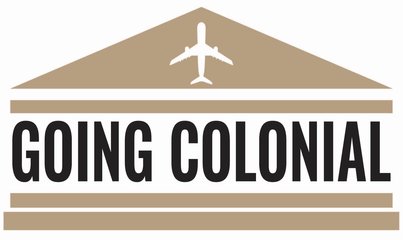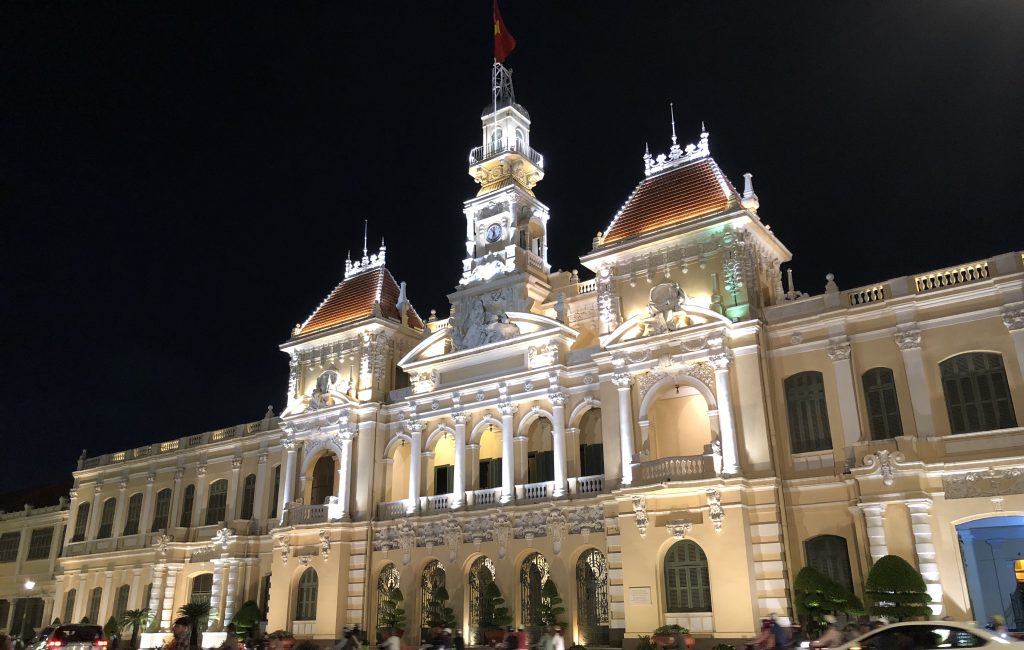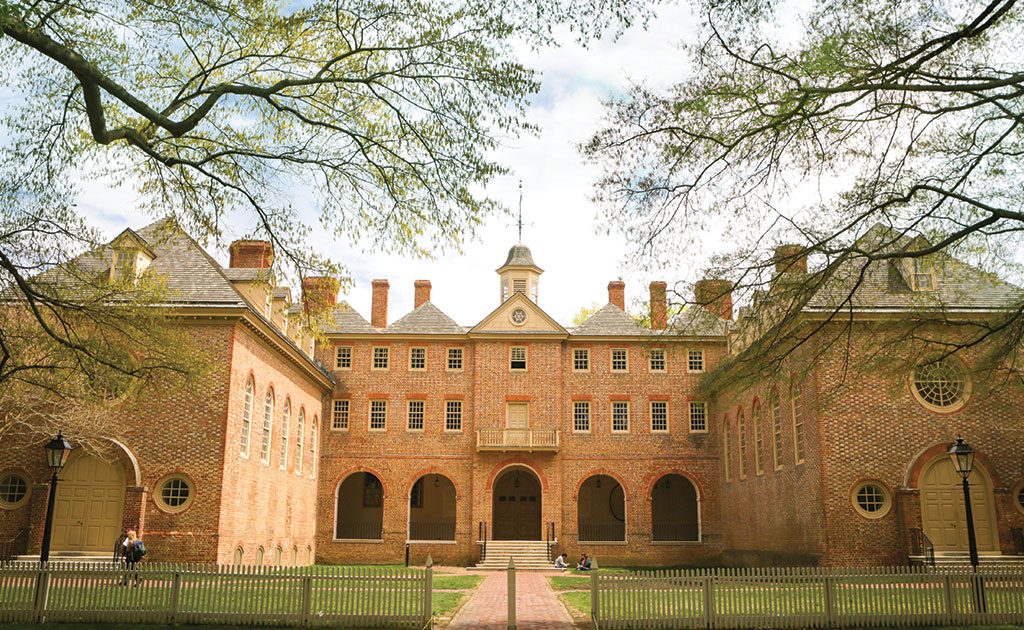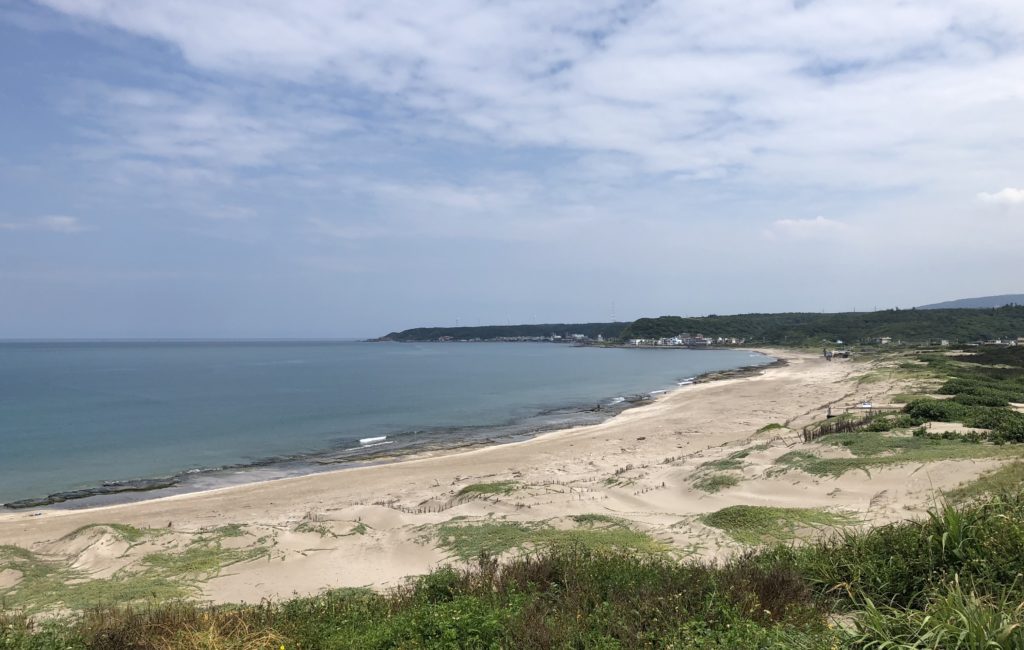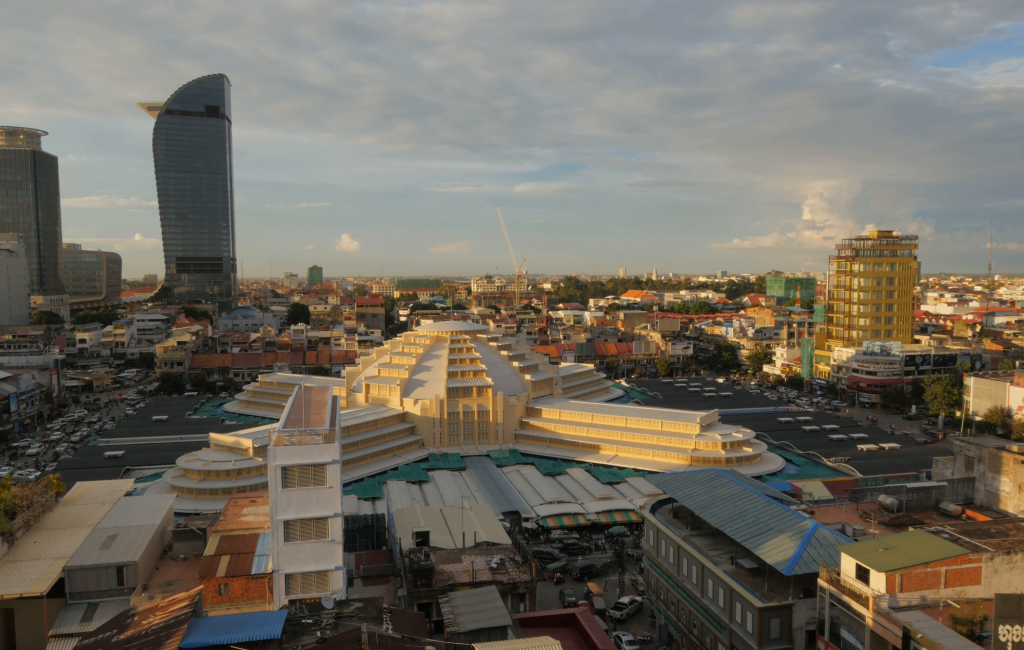
Phnom Penh, Cambodia’s capital city, was founded in the late 14th century, becoming the capital of the Kingdom of Cambodia by the mid 15th century. However, the city essentially became a village once more during Cambodia’s dark ages, at which time there was fighting amongst various parts of the state. In 1866, with the rise of King Leggio Norodom, Phnom Penh again became the royal capital for the first time in over 300 years.
French missionaries initially made inroads in Indochina in the 17th century, and their influence began to spread in the area with religion and trade. When the King of Cambodia asked for a protectorate to mitigate pressure from Siam (Thailand), the French agreed and formed the French Protectorate of Cambodia in 1867. Two decades later, the French were the victors of the Sino-French war and took control of what is today Laos, Vietnam, and Cambodia, which became known as French Indochina.
From the late 1800s on, the French began to build Cambodia around its capital as they saw fit, creating a modern city in the sweltering climate, complete with administrative offices, schools, banks, hospitals, hotels, etc. This wasn’t without strife, however, with frequent miscommunication and mistreatment, such as Cambodians paying the highest taxes in French Indochina, which lead to revolts that were ultimately unsuccessful.
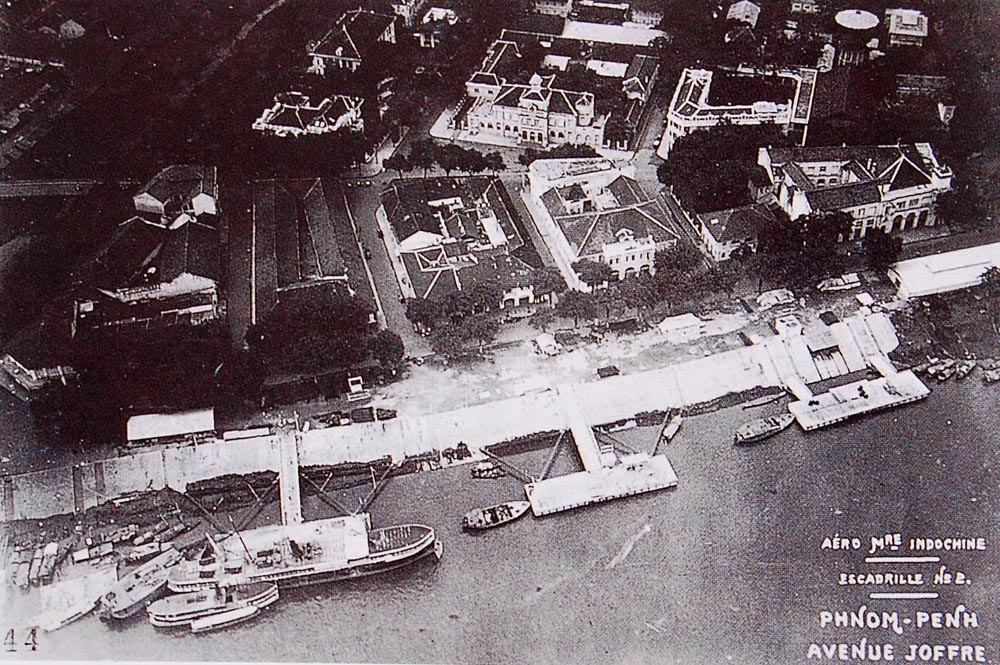
Phnom Penh prospered in the early to mid 20th century, and was considered one of the most beautiful cities in Southeast Asia before the reign of dictator Pol Pot from 1975-1979. The country entered dark times during this era, with almost two million people wiped out from the devastating effects of communist rule.
Cambodia has been facing an uphill battle ever since, but has been working to regain its glory through a mix of contemporary development and heritage preservation.
Top 10 Colonial Buildings in Phnom Penh
1. Hotel Le Royal
The hotel originally opened in 1929 as Hotel Le Royal, and is the most iconic colonial building in Phnom Penh with its imposing facade, elegant interior, and an aura of opulence. No wonder it’s been the choice of such guests as First Lady Jacqueline Kennedy and Charlie Chaplin. Currently, the name of the hotel is the Raffles Hotel Le Royal after Raffles Hotels and Resorts restored and reopened the grand hotel in 1997, after adding three new wings while retaining the charm of the interior and exterior of the main building. Check out that doorman!
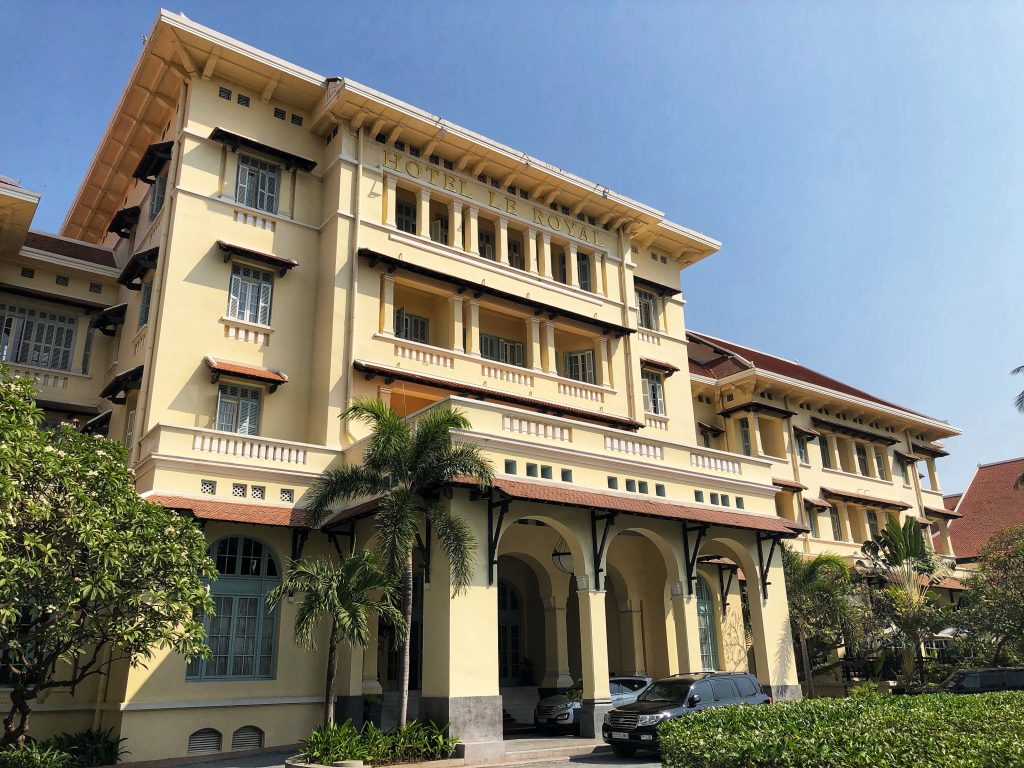
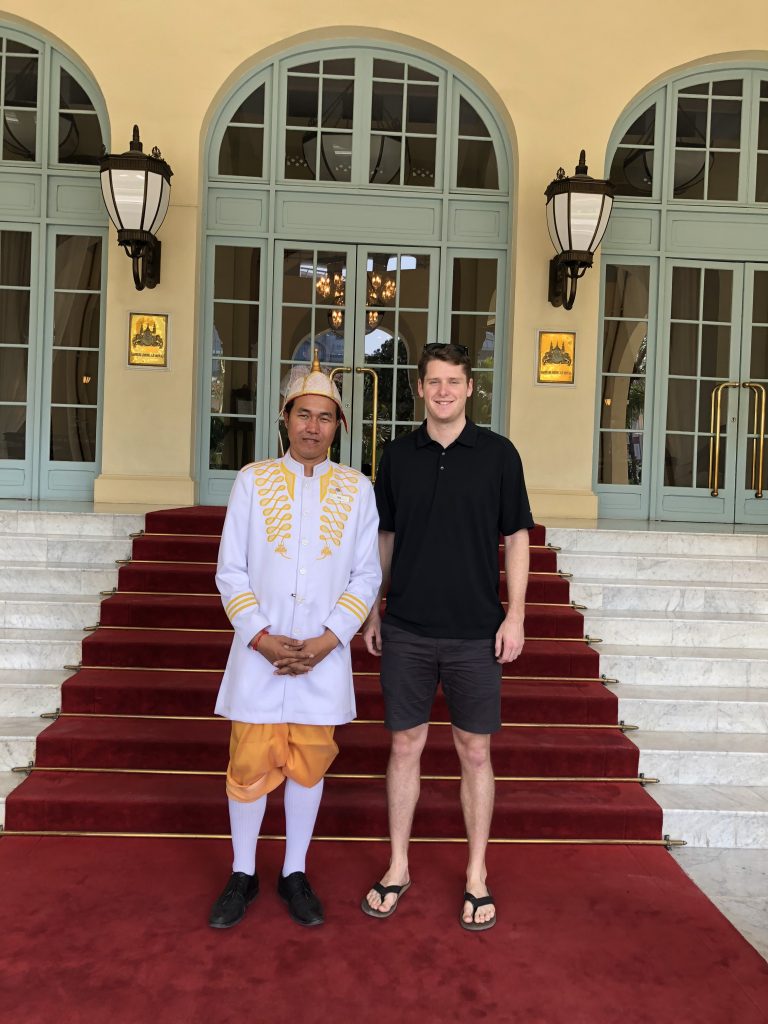
2. Central Post Office
Opened in 1895, the French neoclassical building that stands as the Central Post Office is a classic piece of architecture in Cambodia’s capital. Situated in the heart of the French administrative district, and altered over several years, the post office gained its current form in 2004 after a restoration and reopening. This administrative square is the best place for viewing colonial architecture in Phnom Penh, whether it be original or remodeled.
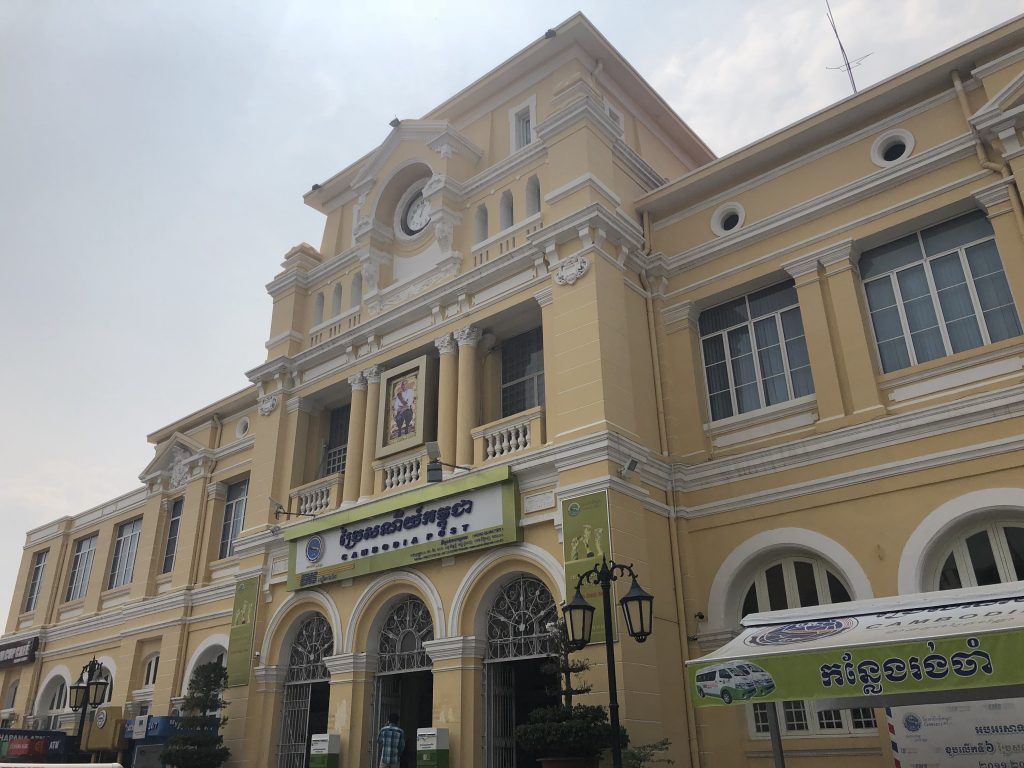
3. Phnom Penh Railway Station
Phnom Penh Railway Station, originally constructed in Art Deco style in 1932, has a tumultuous past. Although the station serviced the new route to a city in the northern Cambodia, Battambang, and railways were a sense of pride and joy in the country, things took a dark turn when Pol Pot came to power and used the station as his meeting hall. However, Cambodia is gaining its traction today with the reopening of service to the Thailand border after 45 years and the opening of the airport train in the summer of this year (2018). The beautiful building with two quad towers, centerpiece clock, and Art Deco balustrade is source of pride for Cambodians.
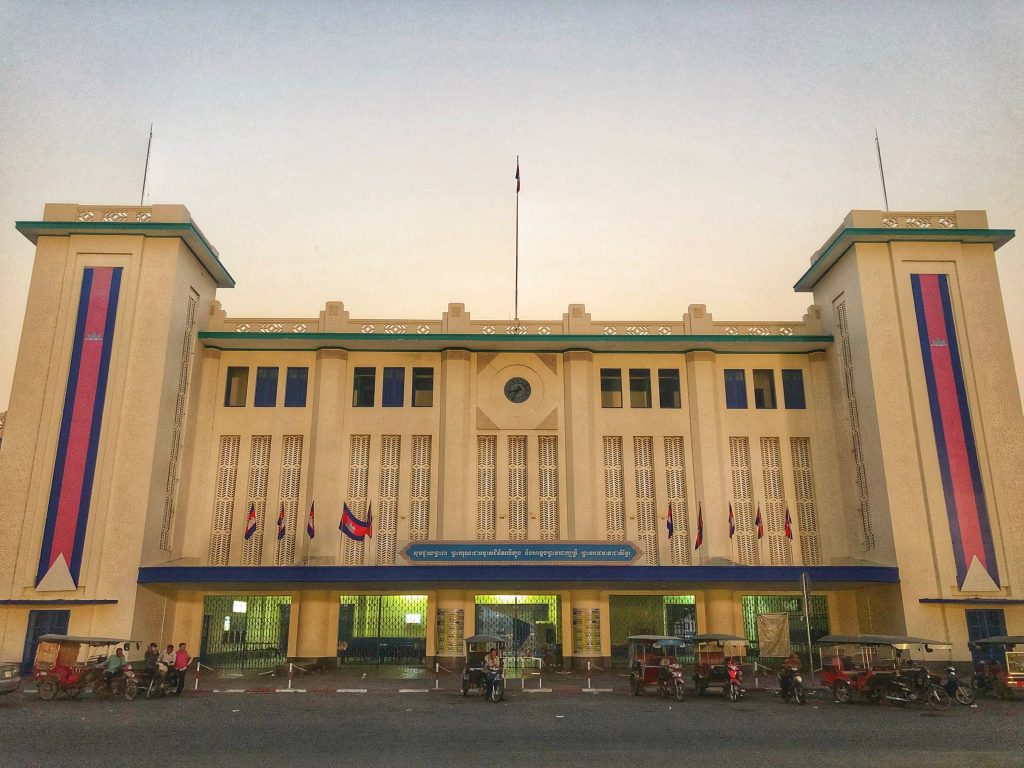
4. National Library of Cambodia
The National Library in Phnom Penh is a simple, yet dignified structure sitting next to Hotel Le Royal. Constructed in 1924, the Library has good days and bad, like many of the colonial structures in Phnom Penh. Following independence in 1953, Cambodia saw a rise in the number of published books in French, Khmer, and English, and the country was flourishing. However, the excitement turned to despair as 80% of the library’s collection was destroyed during Pol Pot’s regime. This quaint structure will hopefully see restoration soon to last for generations to come.
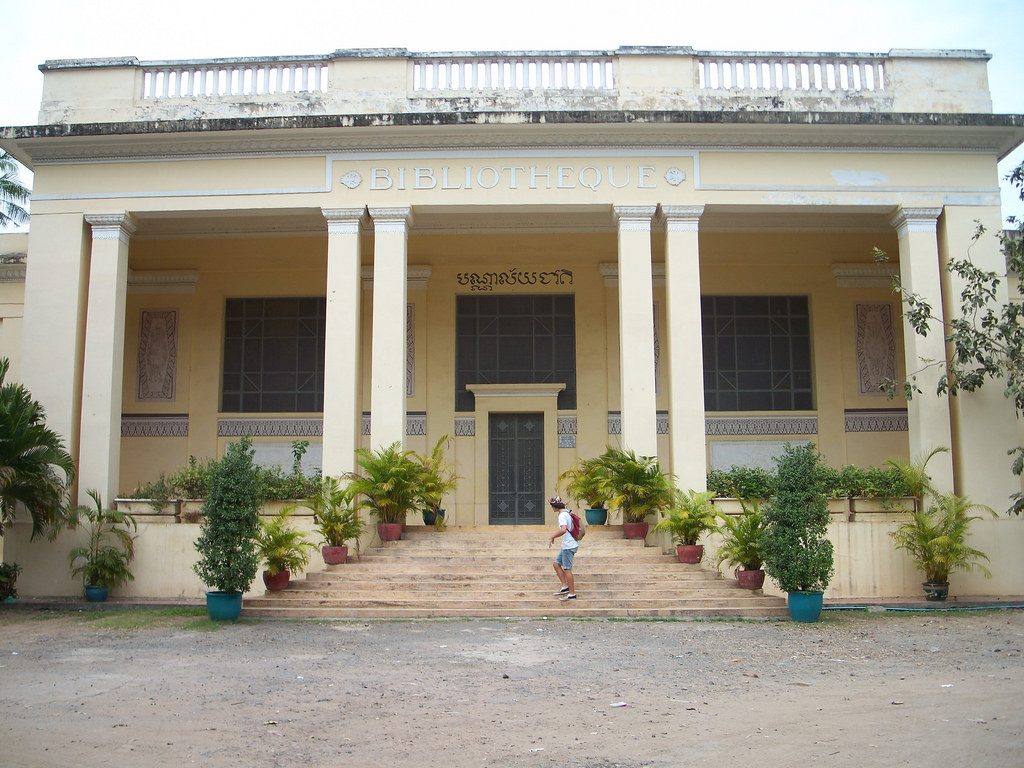
5. Central Market
Designed by French architects in the mid 1930s, the Central Market opened with much fanfare, claiming it to be the biggest market in Asia. The building was constructed in Art Deco style, much like the Railway Station, but has a large central dome, from which four arms extend, housing various shops and vendors. The market most recently underwent a renovation in 2011, and you can find all sorts of gifts and trinkets here, as well as a solid lunch.
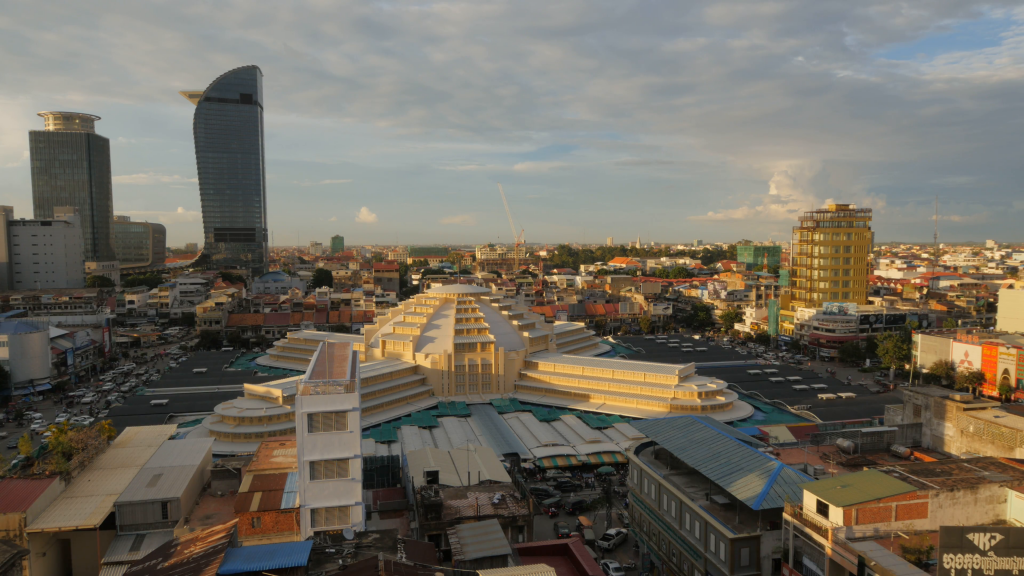
6. Royal University of Fine Arts
Royal University of Fine Arts, founded in 1917, was the first university established in Cambodia. The French opened the school as École des Arts Cambodgiens with the original disciplines including traditional drawing, sculptural modelling, bronzecasting, silversmithing, furniture making and weaving. The University is moving to a new location just outside the city, but colonial era halls remain standing proud, having supported the growth of generations of students, and will now support the expansion of the National Museum of Cambodia.
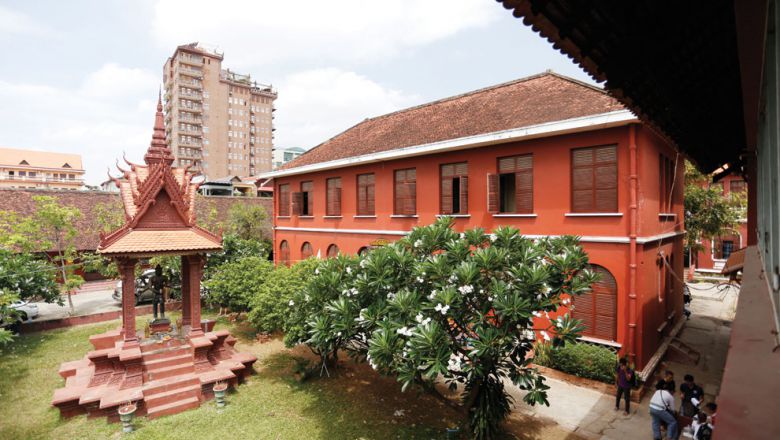
7. The Mansion
As of 2017, The Mansion Bar no longer is in operation. The structure was built in 1910 by a wealthy Cambodian merchant. Owned by the FCC since 2009, the structure has opened to host one of the most unique retro bars in the city, which sadly I didn’t not get to experience due to construction. This building remains one of my favorites in all of Southeast Asia, having an elegant charm that makes it so appealing.
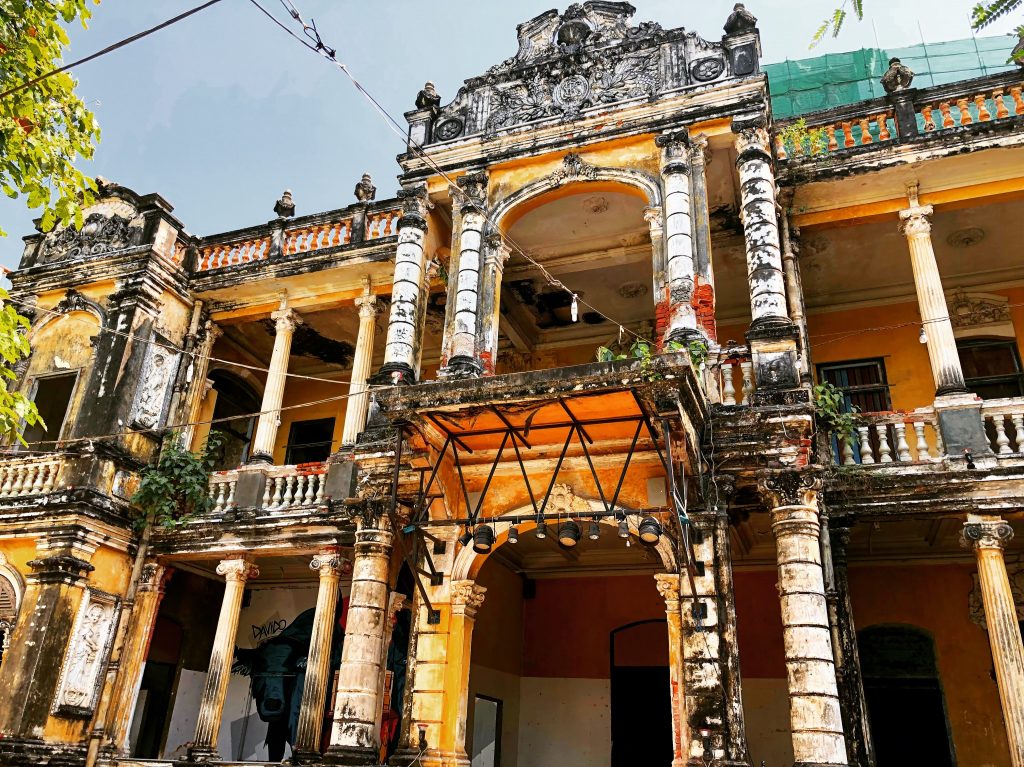
8. French Development Agency and Van’s Restaurant
Sitting adjacent to the Central Post Office is a lively colonial building that houses one of best restaurants in Phnom Penh, Van’s Restaurant, and the French Development Agency, responsible for French-backed industry and infrastructure development in the country. The now yellow with white trim building, originally constructed in the late 1800s for the Indochina Bank’s headquarters, displays elegance and grandeur with its porte-cocheres, balustrades, and ornate designs.
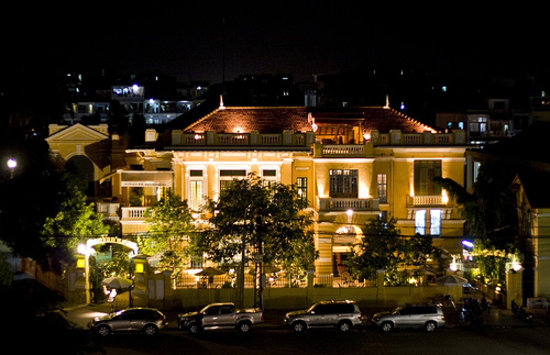
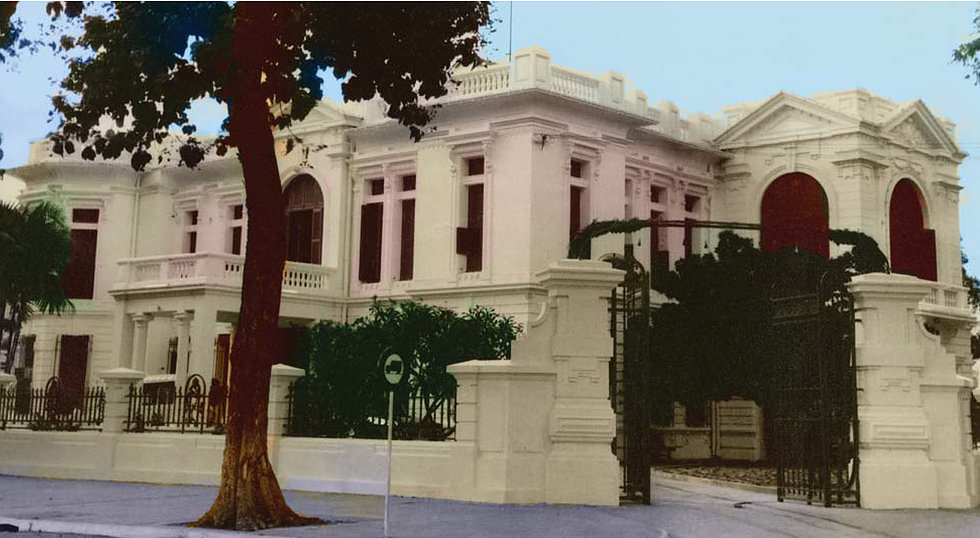
9. UNESCO Building
Built by a wealthy Cambodian merchant in the same era and one block down from The Mansion, the vibrant, opulent UNESCO office building has been the Phnom Penh branch’s headquarters since 1991. Before UNESCO and after the fall of the Khmer Rouge, the building housed the Vietnamese City Protection Unit as well as the Department of Conservation. The soft yellow structure invokes French Baroque style with ornate designs, and white balustrades lining the building’s facade.
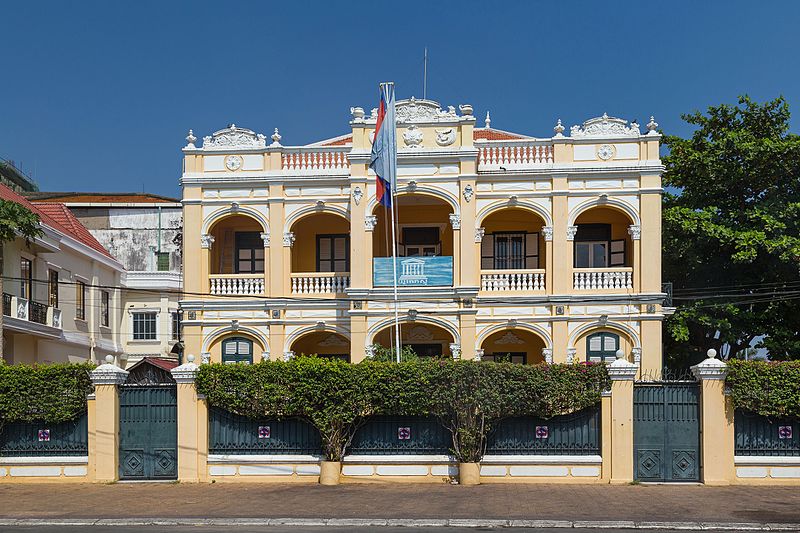
10. FCC
Formerly the Foreign Correspondents Club, the “FCC” is no longer affiliated with any media organizations and is a for profit business. However, the FCC is an important piece of journalistic history in Phnom Penh since its founding in 1993 as the country was still in a rebuilding phase, hosting a place where journalists could come together as well as hold press conferences for various groups and individuals. Sitting magnificently on the corner lot with its trapezoidal facade and white balustrades on the upper three levels, the bar and hotel overlook the merging of the Mekong and Tonle Sap rivers. The FCC’s logo, still in use today, came from a student at the Royal University of Fine Arts just down the street.
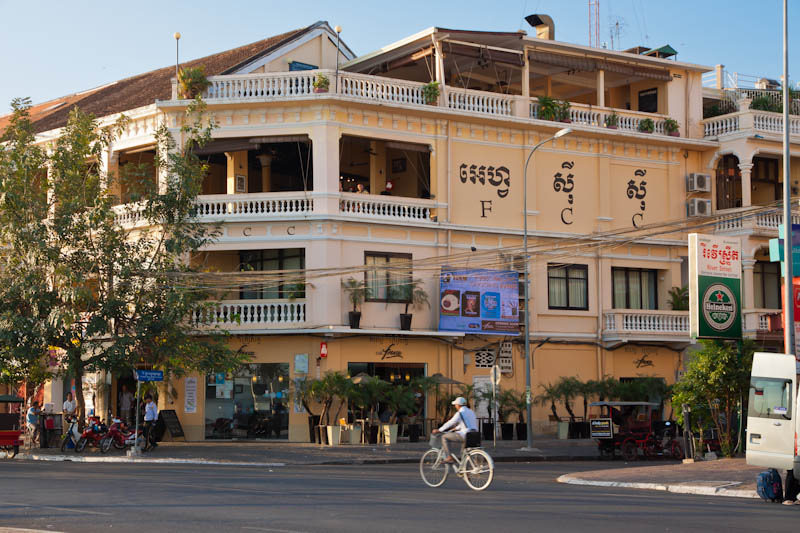
Honorable Mention:
Ministry of Posts and Telecommunication
In 2016, the Ministry of Posts and Telecommunication moved into a new French colonial inspired building adjacent from Hotel Le Royal. I believe this type of construction in recreating colonial buildings is important because it’s not only a magnificent sight and workplace but also a symbol of a city’s heritage.
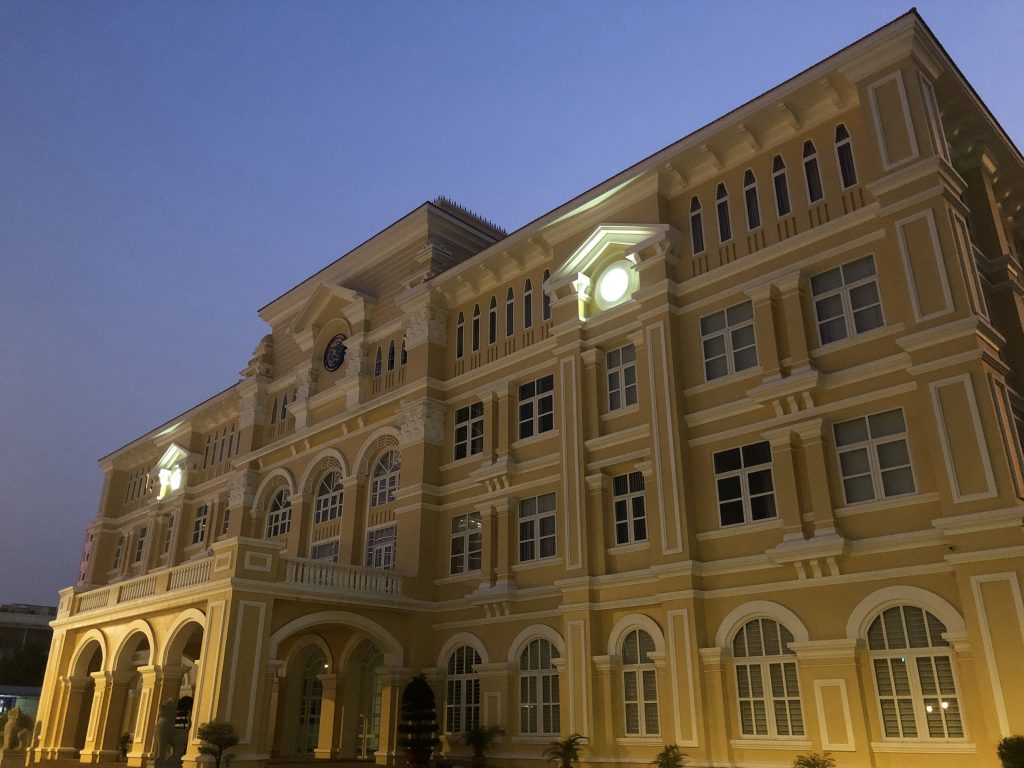
Phnom Penh City Hall
Phnom Penh’s City Hall has been in the same site since 1925, but similar to the Ministry of Posts and Communication, the reconstruction retained its colonial architectural design.
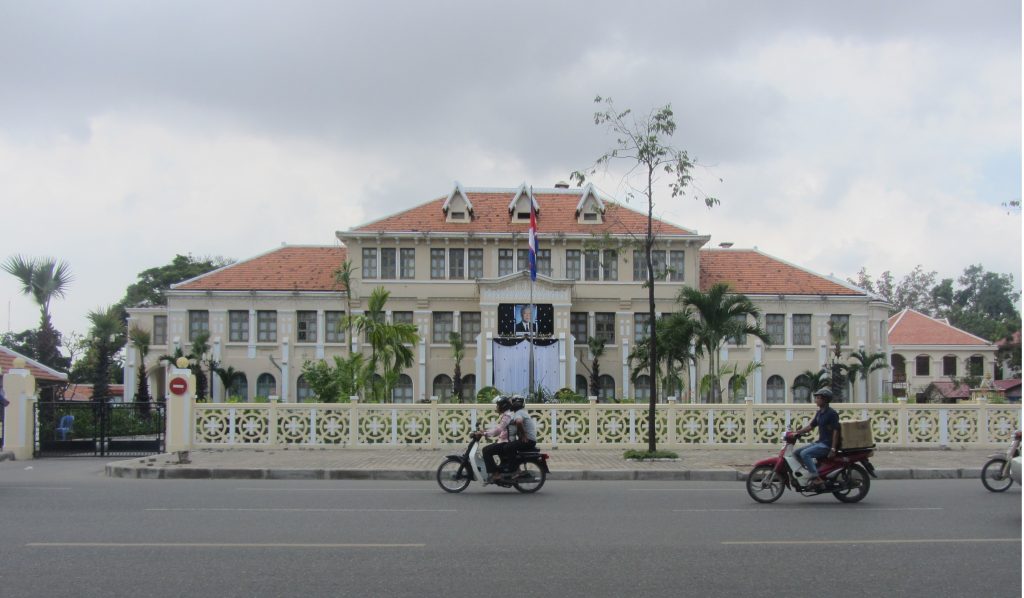
Note: Buildings are judged on 1. Historical significance, 2. Architectural design, 3. Impression and aura and 4. Influence and importance to community. Disagree or think I missed one? Let me know in the comments!
Latest posts by Doug Chesney (see all)
- 48 Hours in Ho Chi Minh City, Vietnam - November 9, 2018
- The Nine Colonial Colleges - October 3, 2018
- Top 10 Colonial Buildings in Phnom Penh - September 12, 2018
